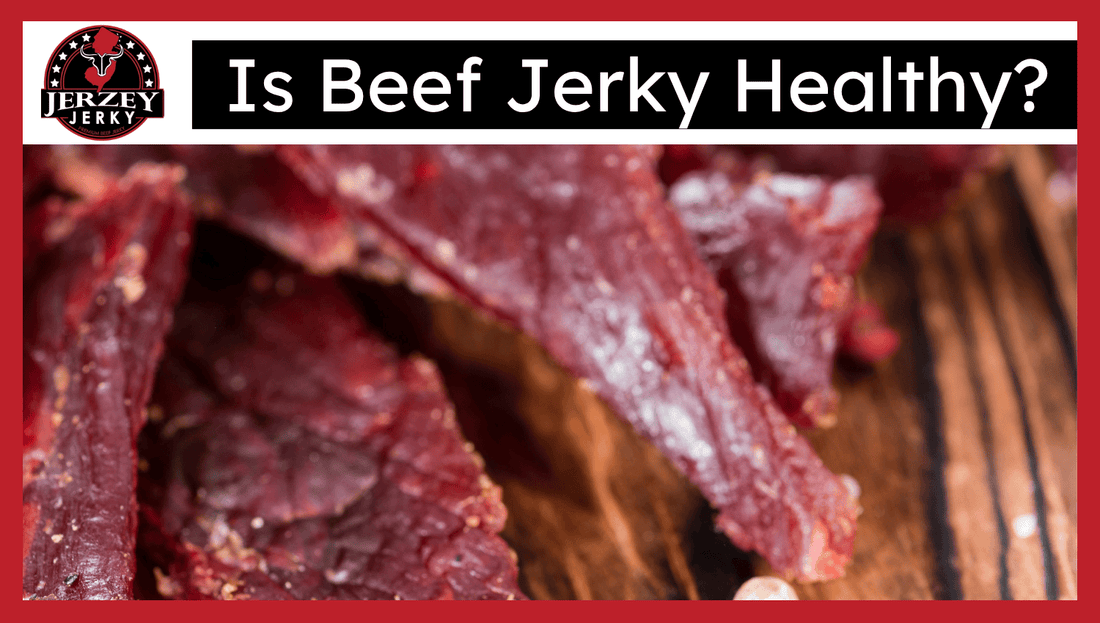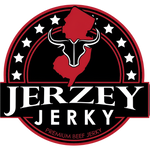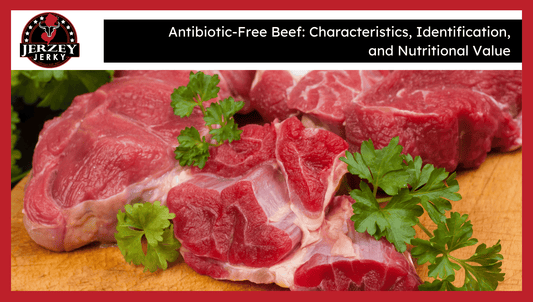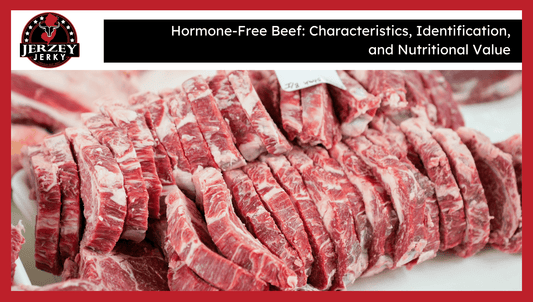
Is Beef Jerky Healthy?
Beef jerky is a healthy snack, and it is thinly sliced lean beef with all visible fat eliminated. The meat is marinated in salt, spices, and chemical preservatives. This process enhances flavor, removes moisture, and protects against spoilage, making jerky dry, chewy, and has a long shelf life.
Beef drying is a thousand-year-old practice. Native Americans smoked and sun-dried meat as a source of survival food when traveling on long journeys or during winter.
Manufacturers today either use controlled smokehouses or dehydrators. It is stable and long-lasting due to the addition of salt and preservatives, which inhibit bacterial growth.
Jerky comes in four major categories, namely traditional, low-sodium, organic, and flavored. Organic jerky does not contain any synthetic preservatives. Low-sodium jerky restricts salt. Teriyaki, peppered, and barbecue are the flavored varieties.
The product's long shelf life, combined with its low moisture content and portability, makes it a favorite among travelers, hikers, and sports enthusiasts.

What is the Nutritional Breakdown of Beef Jerky?
Here are 6 key nutritional components of beef jerky, based on standard 28 g servings:
-
Rich in Protein: Beef jerky provides 915 mg of protein in 28 g. It promotes recovery of muscle and energy as well as satiety. Consuming proteins helps sustain strength during exercise or physical activity.
-
Low Carbs: The majority of the jerky has less than 3g of carbohydrates. It is compatible with low-carb diets, keto, and paleo diets. Diabetic-friendly types do not contain sugar or glazes.
-
Moderate Fats: The fat level varies according to the cut. The lean varieties of jerky are less fat than marbled or flavored jerky. The majority of the meals provide 5-7 g of fat.
-
Sodium Levels: The sodium is 450-600mg. Salt gives it a yellowish color, which helps prevent the meat from going bad. Sodium increases the chances of high blood pressure.
-
Calories: Jerky contains 70-120 kcal in a serving. The increased calories come as sugar, oil, or flavor coating.
-
Other Nutrients: It provides B12, zinc, phosphorus and iron. These assist in red blood cell production, immunity and energy activity.
What Are the Potential Health Concerns of Beef Jerky?
Here are 4 documented health concerns related to beef jerky consumption:
-
Large Amount of Sodium: A majority of jerky includes 450-600 mg of sodium/28g. Consumption of a high amount of salt increases blood pressure and results in water retention. The American Heart Association prescribes 1,500 mg of sodium per day, the amount that is safe for the heart.
-
Preservatives and Additives: Nitrites or Nitrates are common in commercial jerky. Certain studies associate excessive consumption of these with digestive issues and the risk of cancer.
-
Flavours and Added Sugars: Flavored jerky commonly has corn syrup, dextrose, or brown sugar. These enhance the number of calories and decrease health levels. High-sucrose snacks also influence the blood sugar levels in specific individuals.
-
Overconsumption Risks: Consumption of high-volume jerky contributes to redundant salt, filler, and calories. It becomes more risky in combination with other salty or processed foods. Healthy guidelines direct jerky as a treat to be enjoyed on occasion.
Is Homemade Jerky Healthier?
Homemade jerky provides complete control of quality in terms of salt, sugar and seasoning. This minimizes unnecessary additives contained in most packaged goods.
Fat is enhanced with the use of lean, grass-fed beef. Grass-fed beef is high in omega-3 and CLA compared to grain-fed beef.
Natural seasonings of garlic, turmeric, or black pepper serve as the artificial flavor. This makes the ingredient list pure and helps make more wholesome dietary choices.
There are no preservatives and chemical additives in homemade jerky. The fresh ingredients are used to dry the product, making it less processed.
Effective dehydration is necessary. According to the USDA, heating beef to at least 71 deg C before drying helps to kill any bacteria present.
Moisture accumulation is prevented when stored in airtight containers safely. This reduces the chances of mould growth, spoilage and bacterial contamination.
How to Choose a Healthier Beef Jerky
Here are 4 clear ways to choose beef jerky that supports better health:
-
Seek Low-Sodium, Low-Sugar and Nitrate-Free Labels: Opt to eat jerky having less than 300 mg/serving of sodium. Reduced-sugar products assist in decreasing extra intake and sugar spikes.
-
Select Organic Beef or Grass-Fed Beef: Grass-fed beef has a higher amount of omega-3 and fewer unhealthy fats. Organic beef does not have synthetic hormones and antibiotics. Research done in 2010 by California State University backs the higher nutritional content of grass-fed meat.
-
Choose Least Processed Foods: Choose jerky that has a limited ingredient list. Light jerky processing tends to avoid dangerous food-stuff and retains the natural nourishment of meat. Less complicated products digest more easily and do not harm as much when used frequently.
-
Avoid Artificial Ingredients and Sweeteners: Read the label to see corn syrup, MSG, artificial flavor/dyes. These are quality-minimizing and long-term health risk chemicals. Better versions of seasonings are natural ones, such as pepper or garlic.
Who Should Limit or Avoid Beef Jerky?
Individuals who have hypertension, kidney disorder, or are sodium-sensitive tend to resent beef jerky. The American Heart Association lists 450- 600 mg of sodium in a 28 g serving that has an impact on blood pressure and kidney performance.
People who are trying to limit the consumption of processed meat do not eat jerky because of the additives. The World Health Organization classifies cured meat as a Group 1 carcinogen, a cause of colon cancer and chronic inflammation.
People who are on low-purine or low-protein diets avoid jerky consumption. According to research conducted by the Mayo Clinic, gout patients restrict the intake of foods that are rich in purines because increased amounts of purines are transformed to uric acid, which causes pain and swelling of the joints.

 2025-07-19
2025-07-19
 Wayne Holland
Wayne Holland










